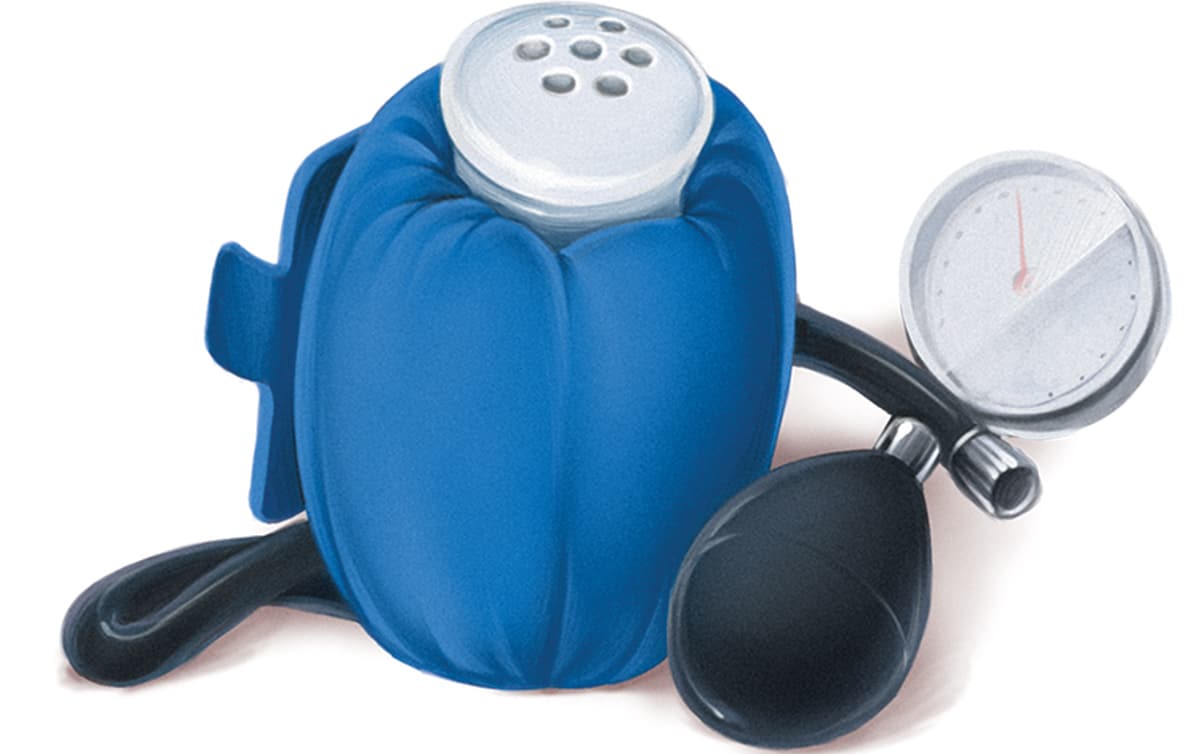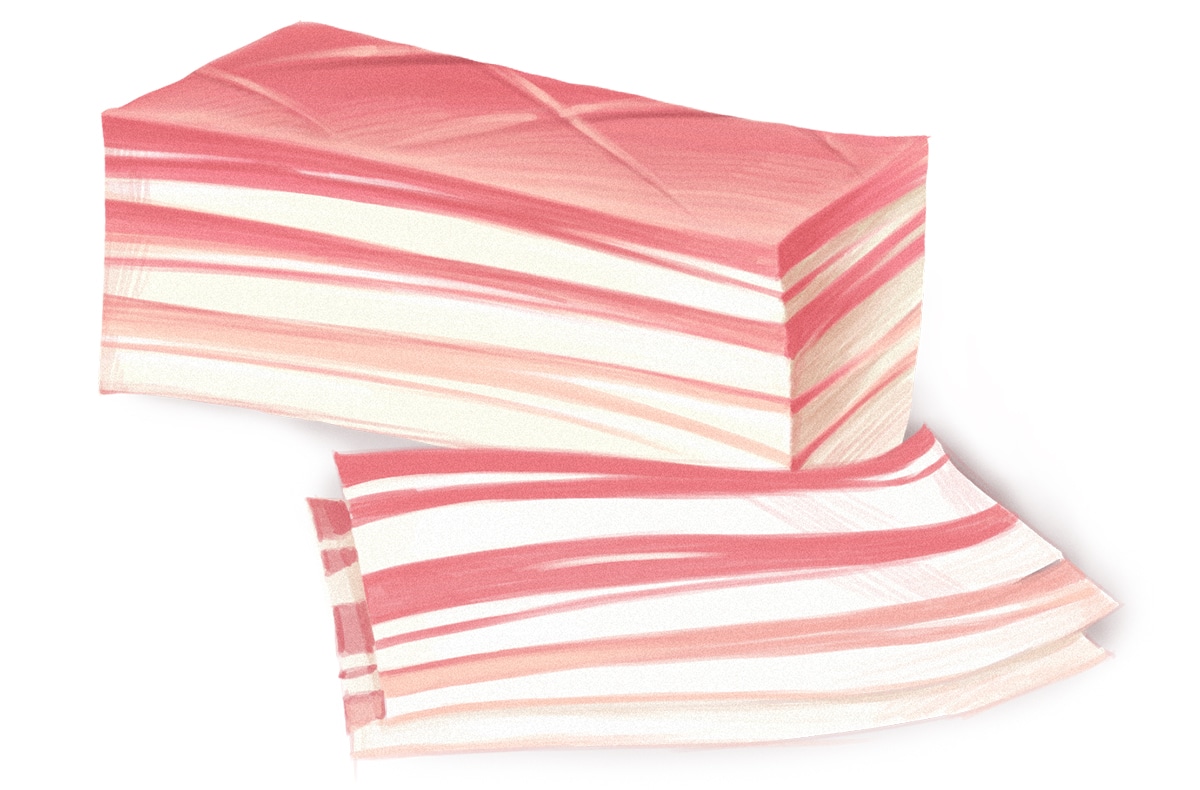Some people get derailed by sweet cravings. But for other people, it’s the salty junk foods that throw them off the Paleo train: pretzels, crunchy corn chips, big slices of pizza with pepperoni and cheese...
What’s more, you might actually be physically craving salt without realizing it: lots of foods are very high in salt even though they don’t taste “salty” – if you’re hankering for corn flakes or cookies, it might actually be about the salt, not the sugar!
Our bodies rarely do things for no reason at all. So what makes salt cravings so powerful? What is your body trying to tell you when you’re craving pretzels (hint: it’s not a pretzel deficiency)?
As it turns out, there is such a thing as too little salt: it’s not common in the general population, but there’s reason to suspect that it might be much more widespread among people who eat Paleo. And salt deficiency actually has much more dangerous consequences than just craving tortilla chips.
Here’s an explanation of the dangers of sodium deficiency, and how it can manifest as cravings, not just for salty snack foods, but even for foods that don’t taste salty, like bread and cookies.
Salt Deficiency? What…?

“Sodium deficiency” might sound like a very strange term to throw around when everyone from the AHA to the Dietary Guidelines to packaging in the health-food aisle is encouraging you to eat less salt and citing alarming statistics about how salt causes high blood pressure. But consider that…
- There’s a lot of evidence that salt isn’t actually dangerous, including this IOM report that made headlines last year. In healthy people, blood pressure varies very little with salt intake, and eating too little salt is also associated with health problems. Junk food high in salt might be bad for you, but it’s not necessarily because of the salt.
- We can go back and forth on how much salt anyone ate during the actual Paleolithic, but in the end, we don’t know. And that’s not even the important question anyway: the question is “what should humans do to be healthy?” not “what did humans do 10,000 years ago?”.
- Your average Paleo dieter is already severely restricting salt just by avoiding processed foods. The authors of this paper note that 77% of the US sodium intake comes from salt added to processed foods. This means that, even if you accept the theory that excess salt is bad for you, eating Paleo still might be overshooting in the other direction, potentially even enough to trigger deficiency cravings.
Imagine someone who goes Paleo and does her best to eat “healthy” by also restricting salt intake. It would be very easy for this person to fall well below the minimum adequate daily intake of sodium.
So why does this matter? Because salt is not a demon waiting in the wings to send you straight to the ER for daring to sprinkle it on your food! Sodium is actually very important for human health.
Salt is necessary to control the balance of body fluids – the amount of water in your blood needs to stay within a small range and adjustments in salt intake and excretion help make that happen. Athletes are very aware of this fact: that’s why they take so much care to drink salt with their water if they’ve been sweating. Just drinking lots of water can cause a potentially dangerous and even deadly fluid imbalance called hyponatremia – to really rehydrate, you need salt as well.
Salt is also crucial for growth and reproduction. As this study has it: “Without dietary salt, growth slows, reproduction fails, and animals die prematurely. In humans sustained on sodium-free nutrient infusions, bone mineralization ceases and growth stops in all tissues except fat.”
Even more interesting is the connection between salt and mood. These authors found that:
“Clinical and experimental observations in humans, along with recent animal studies suggest that a persistent and unresolved sodium appetite can induce behavioral characteristics that are qualitatively similar to psychological depression”
In rats, sodium depletion can create depressive-like symptoms. And in this astonishing study, 23 patients with Chronic Fatigue Syndrome had very impressive symptom improvements when they were treated for hypotension.
Salt Deficiency and Salt (Or Sugar!) Cravings
Now you know that sodium deficiency can cause serious problems, but problems like “depression-like symptoms” could be caused by almost anything (who’s to say it isn’t a deficiency of B12, iron, Vitamin D, carbohydrate, or fat?). That’s where cravings come in: knowing how your body talks to you about salt can help you figure out what you really need.
Salty foods and drinks taste good to you in proportion to how much you need salt. The more you need it, the more you crave it, to the point where the craving can actually alter your taste buds. In lab studies, animals deprived of salt will happily drink salt solutions that taste disgusting (think seawater levels of salty), which they’d never drink if they didn’t need the salt.
More recent studies in humans have found the same thing. In this one, 10 people went on a very low-sodium diet. “Preference judgments” for salty foods tended to be higher during the depletion period: in other words, salt-depleted people craved salty foods more.
But here’s the kicker: only one of the subjects in that study came out and said he was craving “salty foods.” When asked about individual foods, the subjects overwhelmingly wanted foods with a lot of salt, but they weren’t necessarily aware that the salt was what they were craving. Or as this study puts it, “changes in gustatory [how things taste] processing alone cannot explain the motivated salt-seeking behaviour exhibited during sodium deficiency.”
This study distinguishes between two different things:
- Salt appetite: the desire for foods rich in sodium, regardless of how they taste.
- Salt preference: the desire for foods that taste salty, regardless of how much sodium they contain.
Salt deficiency increases salt appetite, but not necessarily salt preference. This fits with other studies: salt-depleted humans are very inconsistent about actually saying that they’re craving salty tastes. It’s backed up by studies like this one, where patients with adrenal insufficiency (which increases physiological need for salt) had increased salt appetite, but no change in sensitivity to the taste of salty foods.
Now think about some foods that contain a lot of salt but don’t taste “salty:”
- Corn flakes: 532mg of sodium per 2-cup (roughly 200 calories) serving.
- Archway Home Style Cookies, Fat Free Oatmeal Raisin (so virtuous! Fat free!): 358mg per roughly 200 calories of cookies, which is probably less than most people actually eat at a sitting.
- Butter croissant: 424mg of sodium per medium croissant.
- Frozen waffles: 482mg of sodium per 2 waffles (roughly 200 calories).
Can you see how a physiological drive for salt might lead you to overeat foods that technically “taste sweet”? If you can’t stop eating butter croissants, you’re likely to think you have a sugar craving, but what if it’s actually about the salt?
The big picture: salt deficiency seems to increase the physiological drive to eat foods that are high in salt, whether or not they taste “salty.” What you need to look out for is the total salt content of the food, not “how salty it tastes.”
This suggests that any and all of the following might plausibly be a form of “salt craving” on Paleo:
- Cravings for salty foods.

If that sounds like you, some suggestions:
- Salt your food to taste. Don’t restrict your salt intake; you have no reason to do that on Paleo.
- Pay attention to how you feel after eating foods with a lot of sodium (whether or not they “taste salty”). If you feel bad, but consistently feel better after eating bacon or olives, maybe your body is trying to tell you something!
- Pay attention to exercise. If you sweat a lot, rehydrate with a mixture of water and salt (plus other electrolytes, like potassium). Salt cravings take a while to kick in post-exercise, so you might not feel them immediately even though the physiological need is there.
- Pay attention to “sugar cravings” when you’re stressed or feeling down: it’s possible that they’re really about salt. It might be worth a try to drink a pinch of salt in your water, or eat something salty but healthy. At least it can’t hurt, right?
This doesn’t apply to people with salt-related diseases (e.g. chronic kidney disease) – for that, talk to your doctor. But for healthy people, salt is not the enemy, and paying attention to your need for it really pays off.





Leave a Reply